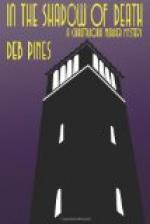Many a burgher who up to that fatal day had fought hopefully and courageously lost hope and courage then. Some, we regret to say, were so disconsolate that they renounced their faith in that Supreme Being in whose hands are the destinies of nations. Their reliance on their country’s God ended with Cronje’s capture, as though their deliverance depended solely upon him. This, however, does not appear so strange when one recollects that the Boers could not afford to lose so many of their best men at a time when all were precious for their country’s safety. As to the siege itself, we, not having been in it, cannot enter into its details. One of the besieged, who, in spite of a terrific bombardment and repeated attacks by the enemy, kept a diary of the events of each day, gives this striking description on the 10th and last day:
“Bombardment heavier than usual. The burghers are recalcitrant and in consequence the General’s authority wanes rapidly. There is hardly any food, the remaining bags of biscuits are yellow from the lyddite fumes, so is everything, damp and yellow. The stench of the decomposed horses and oxen is awful. The water of the rivers is putrid with carrion. A party of men caught three stray sheep early on the morning of the 10th. In haste they killed them and started to skin them desperately; but they had half done when a lyddite shell bursting close to them turned the mutton yellow with its fumes and it had to be abandoned reluctantly. The sufferings of the wounded are heartrending. Little children huddled together in bomb-proof excavations are restless, hungry and crying. The women are adding their sobs to the plaintive exhortations of the wounded. All the time the shelling never abates. The arena of the defenders is veneered. Nearly every man, woman and child is lyddite-stained. The muddy stream is yellow. The night was an awful one. For two days the men are without food, but worse still are the pestiferous air, the loathsome water, and the suffering of the wounded. It is too much for flesh and blood. The morning of the 27th February saw the first white flag hoisted by a Boer general. It was a woeful




